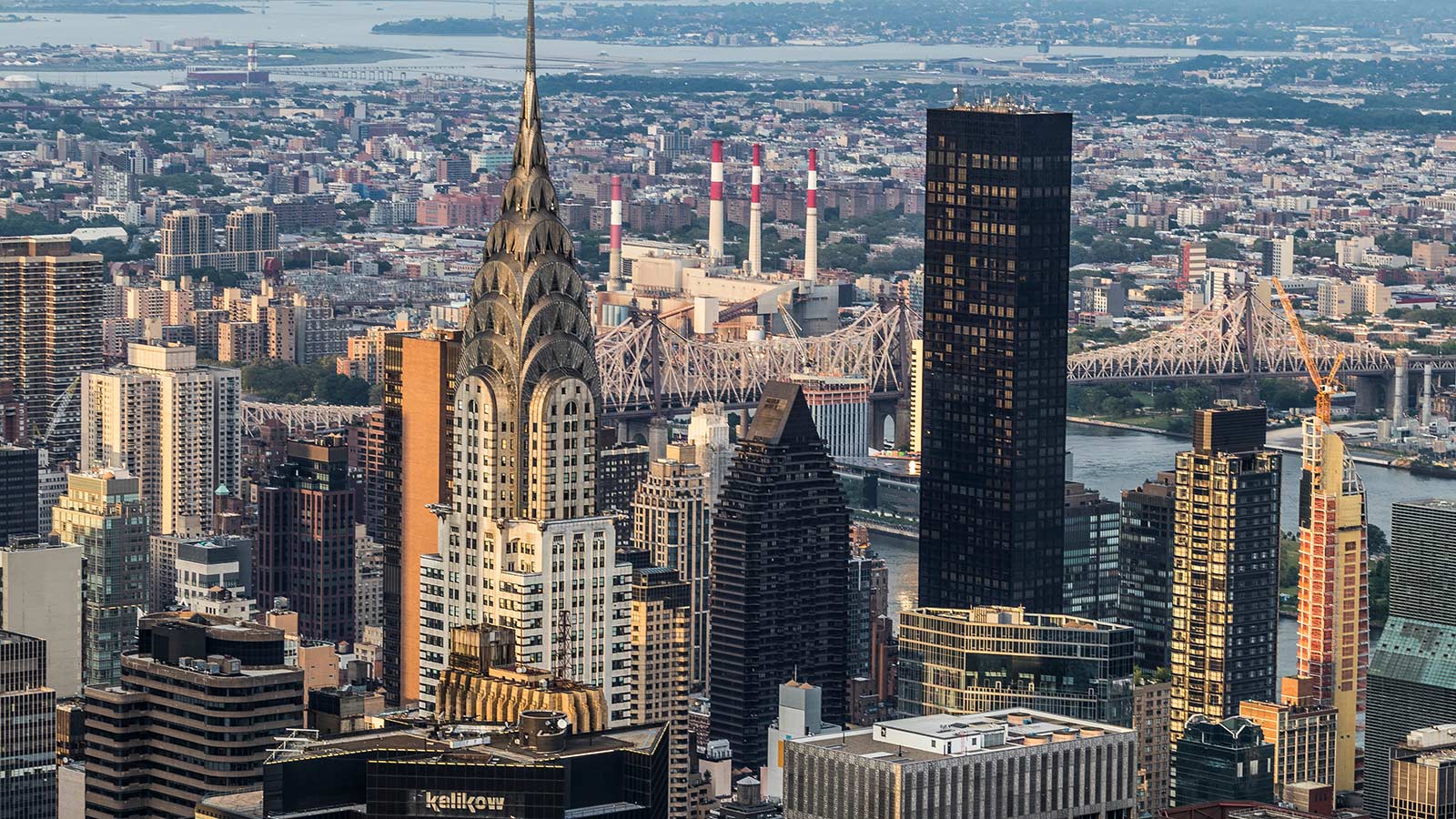New York Local Law 97 is Now in Effect: Are Your Buildings Compliant?
Never miss a thing.
Sign up to receive our insights newsletter.

Buildings account for nearly 70% of New York City’s carbon footprint. To address climate change by reducing greenhouse gas emissions, New York City adopted New York Local Law 97 (LL97), which took effect January 20, 2024.
LL97 established carbon emission caps for large buildings in New York City and is expected to apply to some 50,000 properties. The goal of LL97 is to reach a citywide emissions reduction of 40% by 2030 and 80% by 2050 compared to 2006 baseline levels.
Materials used during construction and fossil fuels consumed through normal operations make the real estate sector, and buildings in particular, a key focus for global net zero emissions targets. Real estate, or the “built environment” is responsible for more than 40% of total global greenhouse gas emissions. [Source: Architecture 2030]
Does LL97 Apply to My Buildings?
LL97 applies to buildings that meet the following criteria:
- Buildings over 25,000 gross square feet
- Two or more buildings on the same tax lot that together are over 50,000 gross square feet
- Two or more buildings owned by a condo association that are governed by the same board of managers and that exceed 50,000 gross square feet
The following exceptions may allow for alternative and less stringent pathways to compliance:
Residential:
- Housing development or building on land owned by the New York City Housing Authority.
- Rent regulated accommodation.
- Real property owned by a housing development fund company organized
pursuant to the business corporation law and article 11 of the Private Housing Finance law. - Building that participates in a project-based federal housing program.
- Real property, under three stories, includes attached, detached or semi-detached dwellings, for which ownership is responsible for maintenance of the HVAC systems and hot water heating systems, and no HVAC system or hot water heating system serves over 25K gross square feet.
Industrial:
- Facility primarily used for the generation of electric power or steam.
Government:
- City building.
Religious:
- Building with main use or dominant occupancy classified as occupancy group A-3 religious house of worship.
Is the Method of Calculating Emissions for LL97 Different From Those Currently in Use?
For other sustainability laws, emissions are calculated using Building Code Occupancy Groups. LL97 guidance, however, requires emissions calculations based on Energy Star Portfolio Manager (ESPM) Property Types. The NYC Department of Buildings converted the emissions methodology to more clearly align with energy use patterns vs life safety. Owners with emissions limits that were reduced as a result of the conversion may elect to use their original calculations based on Building Code Occupancy Groups through 2025. Beginning in 2026, all owners must use ESPM emissions factors to determine limits.
What if My Buildings Do Not Meet the New Requirements?
- Conduct an energy audit to understand the primary energy sources contributing to the building’s carbon footprint.
- Perform a gap analysis for compliance by engaging a specialist to outline measures to reduce energy consumption.
- Evaluate and prioritize options, including window replacement, electrification, renewable energy, smart technology, and the purchase of carbon offsets.
How Do I Determine Whether My Buildings Are Compliant With the Requirements in 2024?
Building owners are required to submit an emissions report to the Office of Building Energy and Emissions Performance, certified by a Design Professional, by May 1, 2025 for the 2024 calendar year and annually thereafter. Building owners should calculate emissions limits based on both the Building Code (BC) and the Energy Star Portfolio Manager (ESPM) Factors to determine the optimal approach. Take these steps to calculate a building’s emissions and make the comparison:
- Identify the Property Types of your building based on occupancy use. Most buildings will have multiple uses, such as Retail and Multi-family housing.
- For each Property Type, pull down the BC Emissions Intensity Limit (tCO2e/sf) and the ESPM Building Emissions Factor (tCO2e/sf).
- Multiply the respective Gross Floor Area square footage (GFA sf) for each Property Type by the BC Emissions Intensity Limit to determine the original Emissions Intensity Limit for that portion of the building.
- Multiply the respective GFA sf for each Property Type by the ESPM Building Emissions Factor to determine the new Emissions Limit for that portion of the building.
- Add each Property Type together to account for the total building GFA sf.
- For each Property Type and the building as a whole, compare the original BC Emissions Intensity Limit to the new ESPM Emissions Limit, and select the method that yields the highest limit.
If, for the total building, Gross Floor Area square footage of the new ESPM Emissions Limit is higher than the original BC Emissions Intensity Limit, the building is likely to be considered compliant in 2024 and is not subject to a penalty (assuming it met the previously established standard).
Once the actual emissions data has been calculated, owners should review the performance of the property against the ESPM limits to determine feasibility of compliance with LL 97.
What Are Some of the Benefits of Compliance?
Compliance can be economical or expensive depending on the scale and complexity of improvements. In assessing methods and pathways to compliance, keep in mind the additional benefits of upgrading building systems for energy efficiency.
Reduced utility bills will lower operating expenses and the overall marketability and value of the asset will be improved with these upgrades. Tenant retention is likely to improve with more comfortable and sustainable structures. Synthesizing sustainability measures with business objectives can help give owners a competitive edge.
What Are the Penalties for Noncompliance?
Owners who do not comply with LL97 or alternate pathways may face these penalties.
- Buildings that exceed their annual emissions limits will face a penalty of $268 per ton of CO2 equivalent over the limit.
- The penalty for failing to file the emissions report is $0.50 PSF per month for each month in violation.
- Knowingly reporting false information or materially false statements is subject to a fine of up to $500k or imprisonment not to exceed 30 days.
How Can Weaver Support Building Owners?
With extensive experience serving the real estate industry and more than a decade supporting clients with greenhouse gas emissions reporting, our firm is uniquely positioned to provide consultative services, tailored to meet your specific needs and challenges.
Weaver specializes in environmental strategy, emissions reporting, and data assurance; all of which are essential to ensure compliance with New York Local Law 97. Highlighting the technical acumen of our in-house engineers as a unique advantage, we deliver accurate and reliable emissions data. Further our comprehensive services offer data assurance and environmental strategy guidance to optimize compliance efforts.
Weaver knows Real Estate. Leverage Weaver’s ESG Strategy and Consulting team’s insights to curate and scale innovative solutions that go beyond the requirements to build a better business.
©2024

